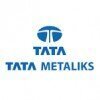
i
SHYAM METALICS AND ENERGY
Filter interviews by
SHYAM METALICS AND ENERGY Furnace Operator Interview Questions and Answers
SHYAM METALICS AND ENERGY Furnace Operator Interview Experiences
1 interview found
I applied via Naukri.com and was interviewed in Jan 2024. There was 1 interview round.
(1 Question)
- Q1. Capacity of blast furnaces
- Ans.
The capacity of blast furnaces refers to the maximum amount of iron that can be produced in a given time period.
The capacity of blast furnaces is measured in terms of the amount of iron produced per day or per hour.
It depends on factors such as the size of the furnace, the quality of the raw materials, and the efficiency of the operation.
Modern blast furnaces can have capacities ranging from a few hundred tons to sever...
Interview Preparation Tips
- Blast furnace in pulverizing cal
Top trending discussions






Interview questions from similar companies

I applied via Naukri.com and was interviewed before Aug 2021. There were 3 interview rounds.

(1 Question)
- Q1. Abhishek sehgal sir took my interview at Guwahati one to one
(1 Question)
- Q1. Praveen sir took my final round via telephonic
Interview Preparation Tips

Service Engineer Interview Questions & Answers
Kirloskar Ferrous Industriesposted on 2 Aug 2022

(1 Question)
- Q1. Asking questions regarding Sinter Plant operations and process
- Ans. 33M² and explained about Sinter process
Interview Preparation Tips

I applied via Walk-in and was interviewed in Jan 2024. There were 4 interview rounds.
Normal question based on steel manufacturing.
(2 Questions)
- Q1. All about DCV, PRV, and Hydraulic.
- Q2. Miscellaneous question about Hydraulic and steps involved in manufacturing of steel, no of panels and their function etc.
(2 Questions)
- Q1. In detail of the hydraulic system.
- Q2. Function of each equipment and their application in steel plant.
- Ans.
Equipment in a steel plant have specific functions like melting, shaping, and cooling metal to produce various steel products.
Blast furnace - melts iron ore to produce molten iron
Electric arc furnace - uses electricity to melt scrap metal and produce steel
Rolling mill - shapes the molten metal into various forms like sheets, bars, or beams
Cooling bed - cools down the hot steel products after shaping process
Annealing fu...
(2 Questions)
- Q1. Provide details about company
- Q2. Salary and post discussion and negotiations.
Interview Preparation Tips

I applied via Walk-in and was interviewed in Jun 2024. There was 1 interview round.
(1 Question)
- Q1. What is Power factor?

Assistant Manager Interview Questions & Answers
Jayaswal Neco Industriesposted on 27 Jun 2023

(5 Questions)
- Q1. 1. Tell me about yourself
- Q2. 2. Why u choosed mechanical engineering
- Q3. 3. Elaborate use of gear box
- Ans.
A gear box is a mechanical device that uses gears to provide speed and torque conversions from a rotating power source to another device.
Gear boxes are commonly used in vehicles to transfer power from the engine to the wheels.
They can also be found in industrial machinery to control speed and direction of rotation.
Gear boxes consist of multiple gears of different sizes that mesh together to provide the desired output.
T...
- Q4. 4. Types of pumps and their characteristics
- Ans.
Types of pumps include centrifugal, positive displacement, and axial flow pumps.
Centrifugal pumps use a rotating impeller to increase the pressure of a fluid.
Positive displacement pumps move fluid by trapping a fixed amount and forcing it through the discharge.
Axial flow pumps move fluid parallel to the impeller shaft.
Examples include centrifugal pumps in HVAC systems, diaphragm pumps in chemical processing, and axial
- Q5. Metallurgical process of blast furnace
- Ans.
Blast furnace is a metallurgical process used to extract iron from its ore through reduction reactions.
Iron ore, coke, and limestone are fed into the furnace
Hot air is blown into the furnace to ignite the coke and initiate the reduction process
The iron ore is reduced to molten iron, which is tapped off at the bottom of the furnace
Slag, a byproduct of the process, is also tapped off and used in construction
The process i...

I applied via Referral and was interviewed in Mar 2021. There were 3 interview rounds.
Interview Questionnaire
3 Questions
- Q1. Ct,pt which types of Transformer?
- Ans.
There are various types of transformers, including power transformers, distribution transformers, autotransformers, and instrument transformers.
Power transformers are used to transfer electrical energy between different voltage levels.
Distribution transformers are used to step down the voltage for distribution to consumers.
Autotransformers have a single winding and are used for voltage regulation.
Instrument transformer...
- Q2. Rating of VCB in your plant?
- Ans.
The VCB in our plant has a rating of 2000A.
The VCB stands for Vacuum Circuit Breaker.
It is used to interrupt or make electrical circuits in a vacuum environment.
The rating of 2000A indicates its maximum current-carrying capacity.
This rating ensures that the VCB can handle high electrical loads without tripping or malfunctioning.
- Q3. About plc knowledge
Interview Preparation Tips

I applied via Job Portal and was interviewed before Mar 2021. There were 3 interview rounds.
(1 Question)
- Q1. About coal and it's processing
(1 Question)
- Q1. With plant Head, about plant equipment and their maintenance
(1 Question)
- Q1. Why are you looking for a change?
Interview Preparation Tips

I applied via Newspaper Ad and was interviewed before Jun 2021. There were 3 interview rounds.
On electrical subject
(1 Question)
- Q1. Previous experience and location
(1 Question)
- Q1. About resistance series and parallel
Interview Preparation Tips

I applied via Naukri.com and was interviewed in Jul 2024. There was 1 interview round.
(2 Questions)
- Q1. Transformer protection settings
- Q2. Motor protection settings
- Ans.
Motor protection settings are parameters set to protect the motor from damage due to overcurrent, overload, overheating, etc.
Motor protection settings include overload relay, thermal overload relay, circuit breaker, fuses, etc.
These settings are crucial for preventing motor damage and ensuring safe operation.
Examples of motor protection settings include setting the overload relay to trip at a certain current level, set...
Interview Preparation Tips
SHYAM METALICS AND ENERGY Interview FAQs
Tell us how to improve this page.
SHYAM METALICS AND ENERGY Interviews By Designations
- SHYAM METALICS AND ENERGY Engineer Interview Questions
- SHYAM METALICS AND ENERGY Graduate Engineer Trainee (Get) Interview Questions
- SHYAM METALICS AND ENERGY Assistant Engineer Interview Questions
- SHYAM METALICS AND ENERGY Assistant Electrical Engineer Interview Questions
- SHYAM METALICS AND ENERGY Executive Accountant Interview Questions
- SHYAM METALICS AND ENERGY Electrical Engineer Interview Questions
- SHYAM METALICS AND ENERGY Assistant Manager Interview Questions
- SHYAM METALICS AND ENERGY Senior Manager Interview Questions
- Show more
Interview Questions for Popular Designations
- Furniture Carpenter Interview Questions
- Graduate Engineer Trainee (Get) Interview Questions
- Quality Engineer Interview Questions
- Operator Interview Questions
- Production Engineer Interview Questions
- Electrical Engineer Interview Questions
- Junior Engineer Interview Questions
- Service Engineer Interview Questions
- Show more
SHYAM METALICS AND ENERGY Furnace Operator Interview Process
based on 1 interview
Interview experience
Interview Questions from Similar Companies
Fast track your campus placements
|
Engineer
213
salaries
| ₹2.1 L/yr - ₹6.1 L/yr |
|
Assistant Engineer
208
salaries
| ₹1.5 L/yr - ₹4.5 L/yr |
|
Senior Engineer
165
salaries
| ₹2.7 L/yr - ₹8.2 L/yr |
|
Assistant Manager
157
salaries
| ₹3.4 L/yr - ₹9.6 L/yr |
|
Mechanical Engineer
71
salaries
| ₹2 L/yr - ₹6 L/yr |

Jai Balaji Group

Electrotherm

Welspun Corp

Jayaswal Neco Industries
- Home >
- Interviews >
- SHYAM METALICS AND ENERGY Interview Questions >
- SHYAM METALICS AND ENERGY Furnace Operator Interview Questions











